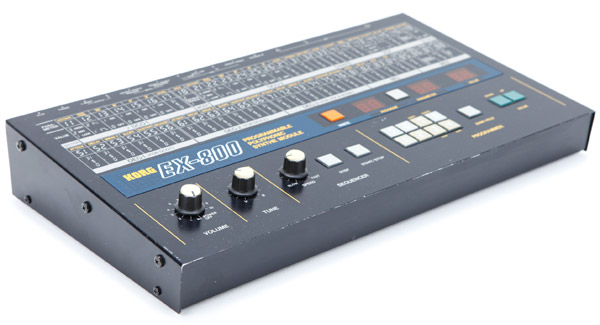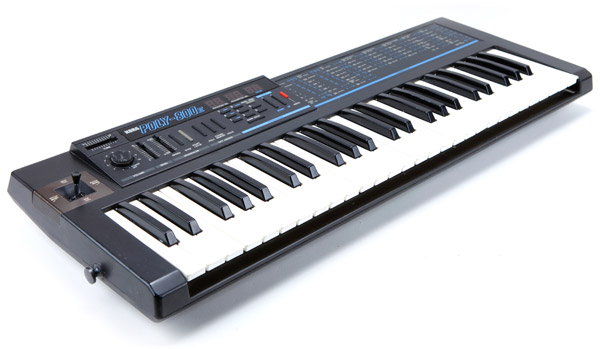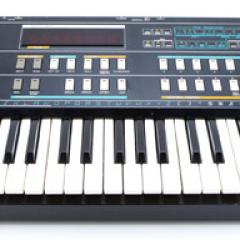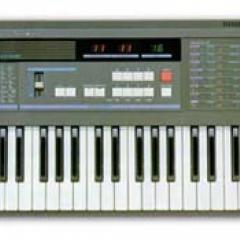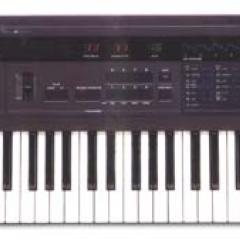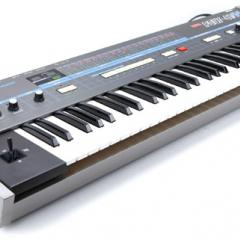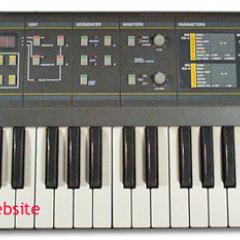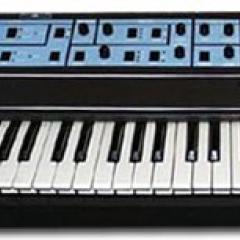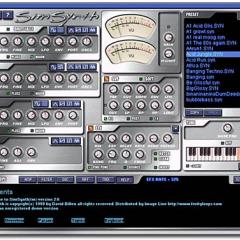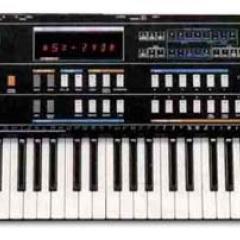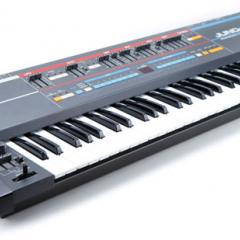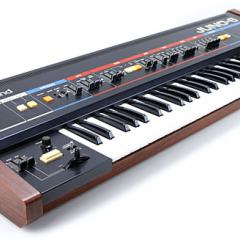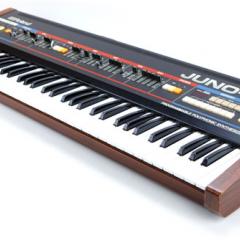Korg Poly-800
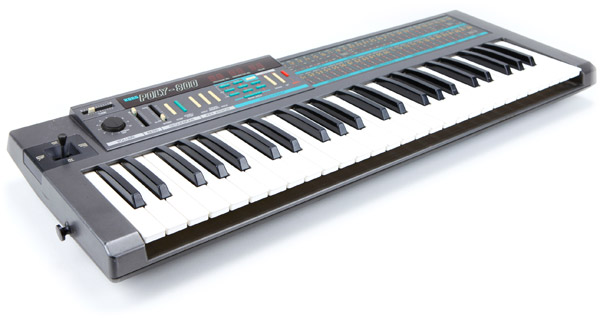
Poly-800
At a time when Roland was doing well with their Juno-series, KORG countered with a poly-synth of their own in 1983 with the Poly-800. The Poly-800 was comparable to the Juno-106, at the time, with respect to the fact that musicians now had access to affordable programmable polyphonic analog synthesizers (it listed for under $1,000) with memory storage, stable DCOs (digitally controlled oscillators) and a new state-of-the-art technology called MIDI (although there was no SysEx implementation yet).
The Poly-800 is an eight-voice instrument (two more than the Juno series) with 64 memory patches (half of what the Juno-106 offered) and up to 50 editable parameters! Like the Juno, the Poly-800 had one DCO per voice, although it did feature a Double mode in which the oscillators could be stacked up for a fuller sound and only four voices of polyphony. The analog filter is a 24dB/oct low-pass which is shared by all voices (the Juno has separate filter chips for each voice). There's also a stereo chorus effect, chord memory, a simple built-in sequencer, three digital envelope generators (for the oscillators, the noise generator and the filter), and a funky joystick used to adjust the pitch, modulation and the filter.
Unlike the Juno, which was still a “studio” instrument, the Poly-800 was built for the performer. With a light-weight plastic case (only 10 lb.), a couple low-profile sliders/knobs and only 49 keys, the Poly-800 can run on batteries and has guitar strap pegs so it can be worn like a keytar. A less common reversed color keys model was released for a unique look as well.
EX-800
In 1984, a keyboardless tabletop/rackmount version was released, called The EX-800. In both the Poly and EX models, all sound editing is accomplished by scrolling to a given parameter, described by little more than a two-digit number, and pushing the up or down buttons to adjust it. Fortunately every parameter’s two-digit numeric code and data-range is printed on the faceplate. Obviously, the Juno series has the edge over the Poly-800 when it comes to hands-on editing, however, some sort of external MIDI controller is usually sufficient to get more hands-on and real-time control.
Poly-800 mkII
The Poly-800 model was succeeded by the the Poly-800 mkII (pictured above) in 1985. The mkII added digital delay effects, MIDI SysEx functionality and a darker paint job. Note that the Siel DK70 is very similar to the Poly-800. Poly-800s have been used by Orbital, Depeche Mode, Sneaker Pimps, Vangelis, Geoff Downes, Nick Rhodes (Duran Duran), Yesterdays and Jimi Tenor.
Demos & Media
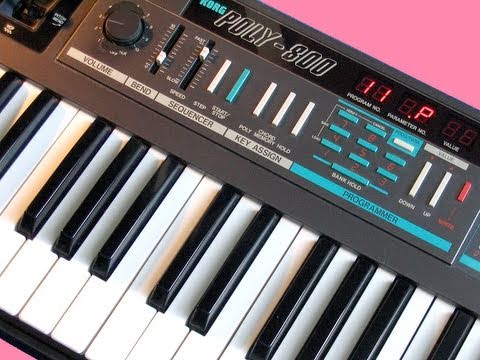
Specifications
Websites of Interest
Resources
Images from Perfect Circuit Audio.
Review updated September 2012.
